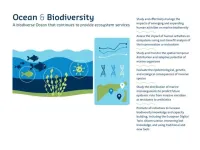(Press-News.org) An abnormal BMI in children – be it high or low – can now be associated with impaired lung function, but if their BMI is normalised before they reach adulthood, the impairment can be offset, researchers from Karolinska Institutet report. Their results, which are based on data collected under the BAMSE project in Sweden, are presented in The European Respiratory Journal.
One in ten people have reduced lung function development in childhood and cannot achieve maximal lung capacity in adulthood, increasing the risk of serious health problems such as cardiovascular disease, lung disease and diabetes. One risk factor associated with impaired lung function development is abnormal weight and height. The most common body measurement, BMI (body mass index), takes account of weight, but not muscle and fat composition.
Previous studies have looked into the correlation between BMI and lung function with varying results. Swedish researchers now demonstrate that a correlation does indeed exist when the BMI deviates from the normal – in either direction.
“In this study, the largest so far, we’ve been able to follow children from birth all the way to the age of 24, covering the entire period of lung function development.” says the study’s first author Gang Wang, researcher at the Department of Clinical Science and Education, Södersjukhuset, Karolinska Institutet.
Early intervention is important
The participants could be divided up into different BMI groups, which had already begun to differentiate themselves by the age of two. Unlike children with a normal BMI, those with a persistently high BMI or an accelerated increasing BMI had impaired lung function as adults, primarily the result of restricted airflow in the lungs, a condition known as obstruction.
“Interestingly, we found that in the group with an initially high BMI but a normalised BMI before puberty, lung function was not impaired in adulthood,” says principal investigator Erik Melén, professor of paediatrics at the same department at Karolinska Institutet and doctor at the Sachs’ Children and Youth Hospital. “This highlights how important it is to optimise children’s growth both early in life and during their early school years and adolescence.”
A stable low BMI could also be linked to reduced lung function caused by inadequate lung growth. In these cases, BMI was not normalised over the course of the study.
“The focus has been on overweight, but we also need to capture children with a low BMI and introduce nutritional measures,” says Dr Wang.
Analysed large volumes of BMI data
The study was based on the BAMSE project, in which over 4,000 children have been followed from birth to the age of 24. BMI has been repeatedly measured over this time, at most 14 times. The present study includes 3,200 participants with at least four BMI measurements.
Lung function was measured using spirometry at the ages of 8, 16 and, finally, 24, at which point the function of the smaller airways was also measured via the volume of exhaled nitrogen. Urine samples were also taken so that an analysis of the substances being metabolised could be performed in collaboration with docent Craig Wheelock at Karolinska Institutet’s Institute of Environmental Medicine.
Objective biomarkers
The urine samples from the high BMI group showed elevated levels of metabolites of the amino acid histidine, corroborating the observations of other researchers who found a similar increase in patients with asthma and chronic obstructive pulmonary disease.
“We see here objective biomarkers for the correlation we’ve found, even if we don’t yet know exactly the molecular association between high BMI, histidine and impaired lung development,” says Professor Melén.
The study was financed by grants from the European Research Council, the Swedish Research Council, the Swedish Heart-Lung Foundation, Region Stockholm and the China Postdoctoral Council. Co-author Natalia Hernandez-Pacheco reports funding from the European Academy of Allergy and Clinical Immunology and the European Respiratory Society and lecture fees from OMNI PREX S.L., all outside the scope of this present study.
Publication: “Body mass index trajectories from birth to early adulthood and lung function development”, Gang Wang, Jenny Hallberg, Simon Kebede Merid, Ashish Kumar, Susanna Klevebro, Baninia Habchi, Romanas Chaleckis, Craig E. Wheelock, Natalia Hernandez-Pacheco, Sandra Ekström, Christer Janson, Inger Kull, Anna Bergström, Erik Melén, European Respiratory Journal, online 28 October 2024, doi: 10.1183/13993003.00298-2024.
END
Children’s BMI can affect their future lung function
2024-10-28
ELSE PRESS RELEASES FROM THIS DATE:
Don't worry. Study shows you're likely a more creative writer than ChatGPT. For now
2024-10-28
Imagine you decide to write a short story about a protagonist who creates an artificial human and then falls in love with it. What gender is your protagonist? What about the artificial human? Would you write a moving love story? A cautionary dystopian tale?
Would your story be more compelling than one written by ChatGPT?
Likely yes, says Nina Beguš, a researcher and lecturer in UC Berkeley's School of Information and Department of History. Leveraging her background in comparative literature ...
Heart failure mortality declining in Sweden
2024-10-28
A new study from Karolinska Institutet shows that heart failure mortality has decreased in Sweden over the last 20 years. The study has been published in the European Journal of Heart Failure.
A national study has shown that heart failure mortality has decreased in Sweden over the last two decades. Despite these improvements, the prognosis for heart failure patients remains worrying – 25 percent of those diagnosed in 2022 died within a year.
“Our results suggest that advances in heart failure treatment over the past decades have reduced heart failure mortality, both at the population level and for individual patients. ...
Understanding how mutations affect diseases
2024-10-28
Many statistical models and algorithms used by scientists can be imagined as a “black box.” These models are powerful tools that give accurate predictions, but their internal workings are not easily interpretable or understood. In an era dominated by deep learning, where an ever-increasing amount of data can be processed, Natália Ružičková, a physicist and PhD student at the Institute of Science and Technology Austria (ISTA), chose to take a step back. At least in the context of genomic ...
Quality control in artificial photosynthesis: validating natural antenna mimicry
2024-10-28
Humans can do plenty, but plants have an ability we don’t: they make energy straight from sunlight, a superpower called photosynthesis. Yet new research shows that scientists are closing that gap.
Osaka Metropolitan University researchers have revealed the 3D structure of an artificial photosynthetic antenna protein complex, known as light-harvesting complex II (LHCII), and demonstrated that the artificial LHCII closely mirrors its natural counterpart. This discovery marks a significant step forward in understanding how plants harvest and manage solar energy, paving the way for future innovations in artificial ...
When science speaks in extremes
2024-10-28
“Vaccines are 100% safe, and anyone who doubts this is ignorant”: Have you ever come across messages like this during the pandemic crisis a few years ago? If you often feel that certain public debates—such as those on vaccines or the climate crisis—boil down to a black-and-white clash between two sides demanding, with harsh tones, unquestioning allegiance to their view, you're not entirely wrong. We are rightly accustomed to being warned about pseudoscientific misinformation and fake news, and much research has been devoted ...
Will the ocean suffer an epidemic?
2024-10-28
Written by a team of European experts from the marine sciences, Navigating the Future VI discusses how the biodiversity crisis is being played out in the Ocean. It notes that Ocean species large and small are far less well described than their terrestrial counterparts, making it harder to measure declines and their impacts. This publication provides governments, policymakers and funders with robust, independent scientific advice on future seas and Ocean research. With the COP16 on biodiversity already in full swing in Cali, Colombia, it is timely to reflect further on the need to better understand our Ocean biodiversity.
“Climate change ...
A single thin film perfectly absorbs all electromagnetic waves!
2024-10-28
The research team of Dr. Byeongjin Park and Dr. Sang Bok Lee from the Composites & Convergence Materials Research Division at the Korea Institute of Materials Science (KIMS), has developed the world's first ultra-thin film composite material capable of absorbing over 99% of electromagnetic waves from various frequency bands (such as 5G/6G, WiFi, and autonomous driving radar) using a single material.
This electromagnetic wave absorption and shielding material is less than 0.5mm thick and is distinguished by its low reflectance ...
Teens who made history with Pythagoras’ theorem discovery publish their first academic paper with new proofs
2024-10-28
In 2022, U.S. high school students Calcea Johnson and Ne'Kiya Jackson astonished teachers when they discovered a new way to prove Pythagoras’ theorem using trigonometry after entering a competition at their local high school. As a result, both students were awarded keys to the city of New Orleans, and even received personal praise from Michelle Obama.
Today they become published authors of a new peer-reviewed paper detailing their discoveries, published in the journal American Mathematical Monthly.
Pythagoras’ famous 2,000-year-old ...
More social species live longer, Oxford study finds
2024-10-28
UNDER EMBARGO UNTIL 00:01 GMT MONDAY 28 OCTOBER / 20:01 ET SUNDAY 27 OCTOBER 2024
More social species live longer, Oxford study finds
New research published today (28 Oct) from the University of Oxford has revealed that species that are more social live longer and produce offspring for a greater timespan. This is the first study on this topic which spans the animal kingdom, from jellyfish to humans.
What are the benefits and costs of sociality? Social organisms may enjoy benefits such as sharing resources, being better protected from predators, and having support to raise offspring. However, by living in more ...
Magicians don’t mind sharing the secrets behind tricks – if they are their own
2024-10-27
Magic is one of the oldest forms of entertainment, and much of its enchantment is said to rely on the audience not knowing how the tricks are done.
However, while magicians swear to keep their secrets forever when they embark on their profession they are happy to share the tricks of their trade in certain circumstances, a new study shows.
Illusionists who took part in major new research thought it was OK to expose their own techniques, but not those invented by others, and also believe it is acceptable to reveal the secrets behind tricks invented by someone who has since died.
They didn’t think it was right to share the workings of a magic trick just to gain public ...







